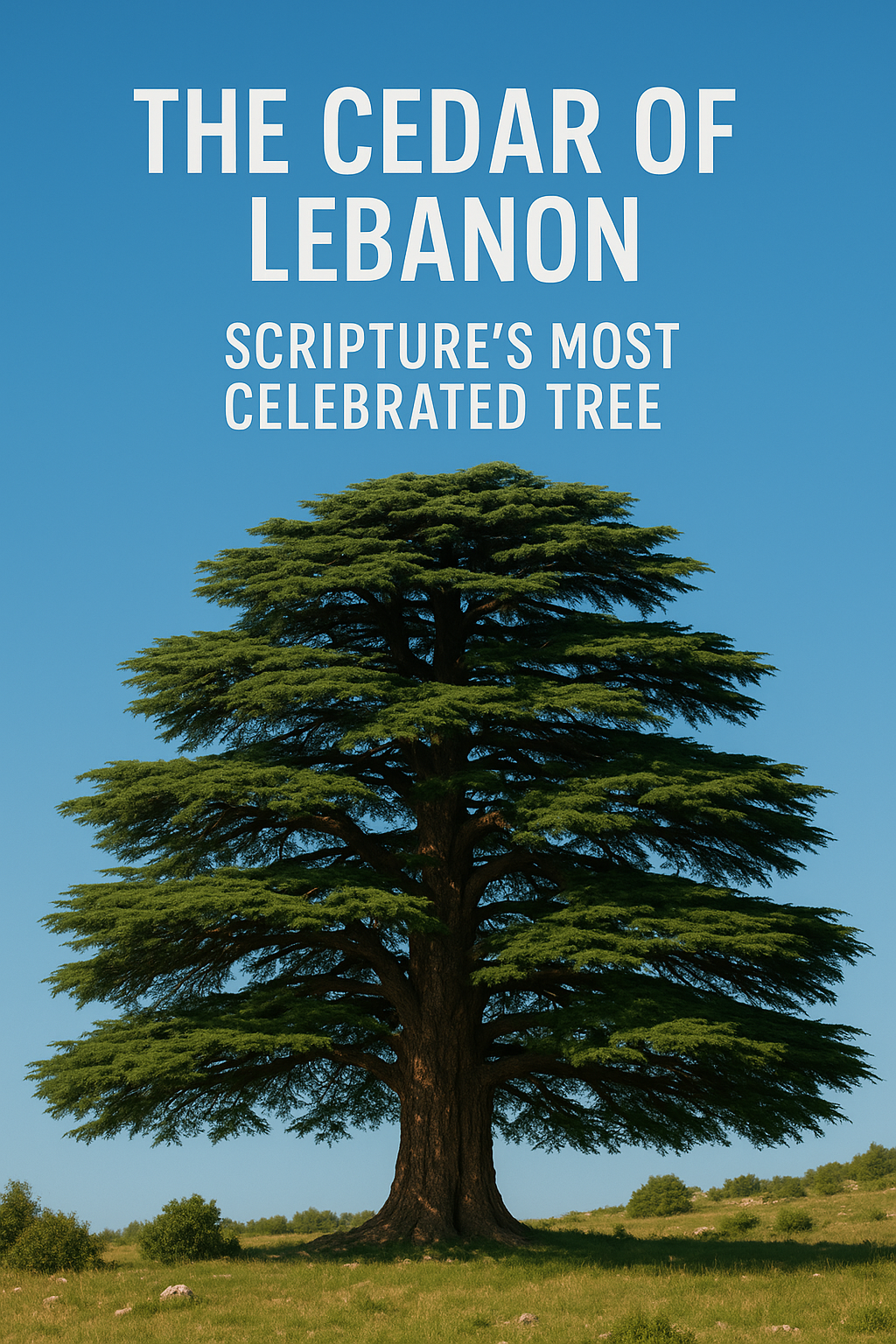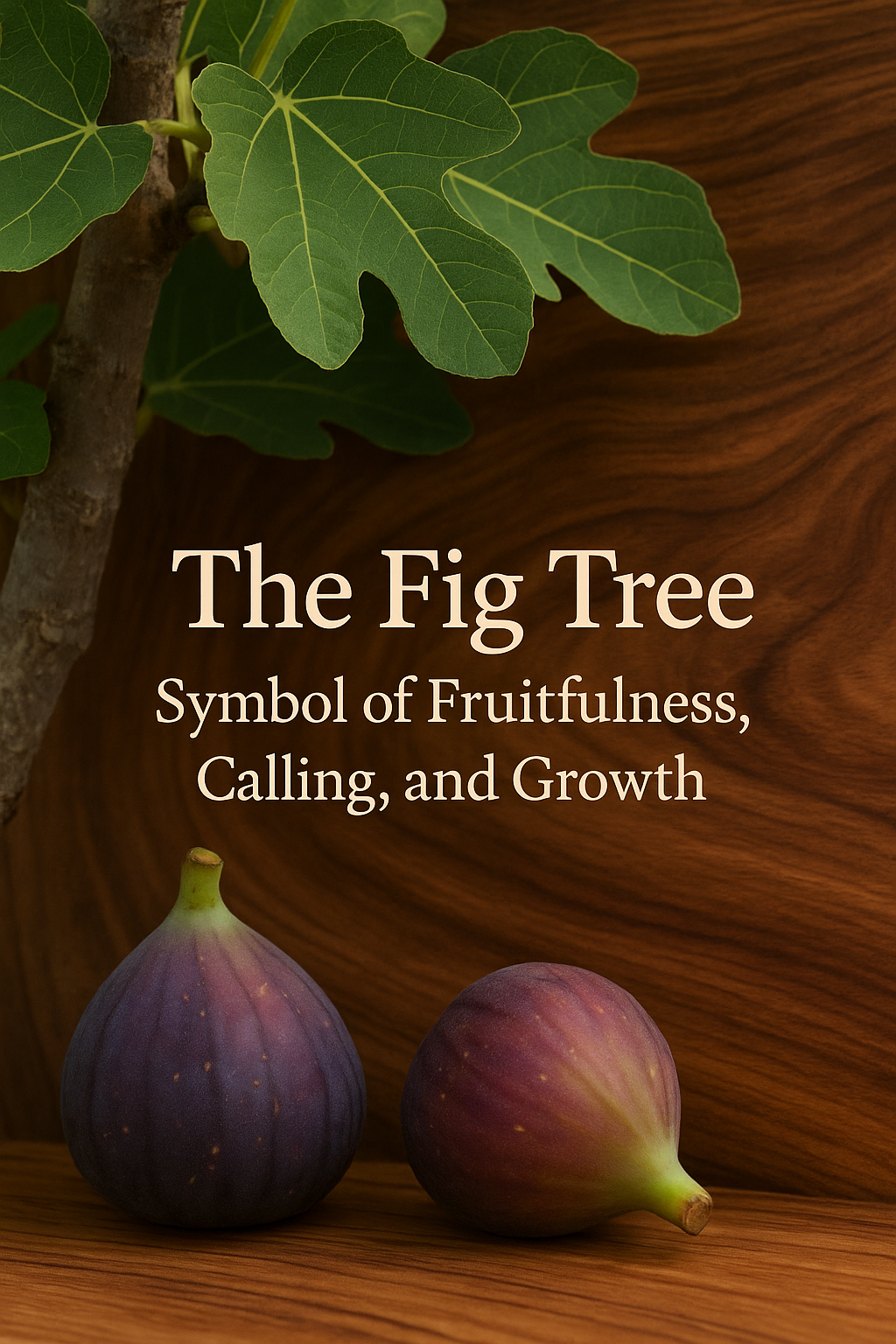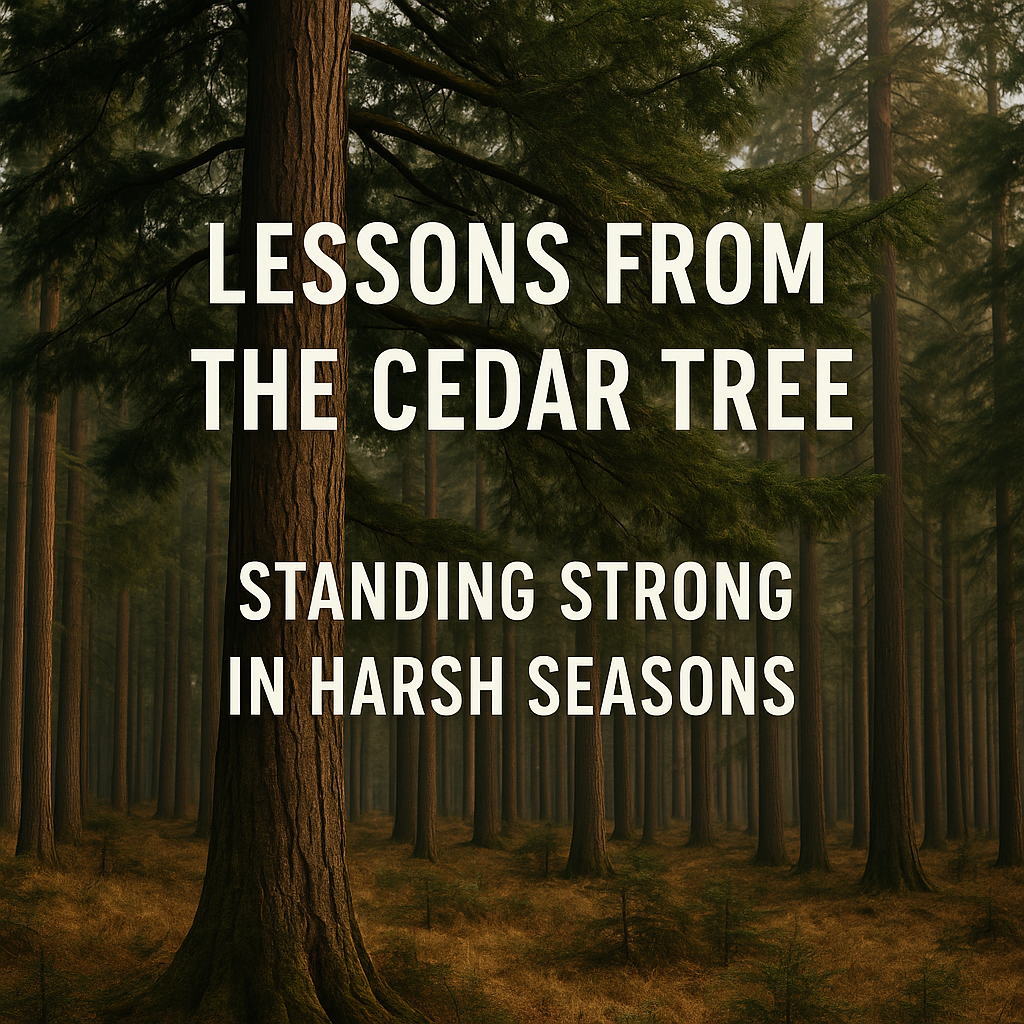There are trees in Scripture that play small but meaningful roles… and then there’s the cedar of Lebanon. This isn’t just another tree tucked into a quiet corner of the Bible. This is the tree. The one poets wrote about, kings prized, and prophets used as the gold standard of strength, beauty, and spiritual stature. If the olive tree is known for its peace and perseverance, the cedar of Lebanon is known for its majesty.
I’ve worked with a lot of woods in my shop—walnut with its shadows, maple with its quiet strength, cherry with its warm glow—but cedars invite a different kind of reflection. They carry a scent that feels like history itself, and Scripture echoes with their significance.
So today, let’s step into the mountains of Lebanon and learn why this tree became one of the most celebrated symbols in the entire Bible.
A Tree That Touched the Sky
Cedar of Lebanon (Cedrus libani) didn’t just grow tall—they towered.
Ancient writers describe them reaching over 100 feet high, with trunks so wide you couldn’t wrap your arms around them even with three friends helping. Their branches spread like open arms, creating the kind of shade travelers longed for in the Middle Eastern sun.
In Scripture, that towering presence became a metaphor for greatness:
-
“The righteous shall flourish like the palm tree; he shall grow like a cedar in Lebanon.” (Psalm 92:12)
-
Solomon compared its height to the vastness of God’s blessings.
-
Ezekiel used the cedar’s grandeur to describe the rise of nations.
This was not a delicate tree. It was the kind of tree you pointed to when you wanted to describe strength that didn’t bow under pressure.
A Timber Fit for Kings
There’s a reason kings traded gold, silver, and diplomatic alliances just to get their hands on cedar.
Solomon’s Temple—one of the most awe-inspiring structures ever built—was lined, roofed, and carved with cedar of Lebanon. The palace too. The royal courts. The interior rooms that held priceless treasures.
Why cedar?
Because it was unmatched in the ancient world:
-
Straight grain that made it ideal for beams
-
Remarkable durability—resistant to rot, insects, and decay
-
A scent that lasts for decades, even centuries
-
A warm, rich tone that made interiors feel like a sanctuary
Cedar wasn’t just construction material; it was a statement. When you used cedar, you were saying, “This is meant to last.”
As a woodworker, I love that. A lot of trends fade, but craftsmanship that outlives you—that means something. Cedar embodies that idea.
The Aroma of Holiness
Of all the trees in the Bible, none is described as often for its scent as the cedar.
In fact, it became a symbol used in purification rituals. Its aroma represented cleansing, renewal, and spiritual refreshment. Even today, if you’ve ever opened a cedar chest or walked into a cedar-lined closet, you know the smell I’m talking about.
It’s calming.
Earthy.
Unmistakably natural.
Like the air in the mountains after rain.
That fragrance became a reminder of God’s presence—subtle but undeniable.
A Symbol of Stability in Unstable Times
When prophets wanted to describe someone strong, grounded, unshakeable, they used the cedar.
When they needed a metaphor for nations that stood tall… or fell from pride… they used the cedar.
The tree became shorthand for:
-
Deep roots
-
Unshakable character
-
Honor
-
Long-term strength
-
Majestic presence
This is why Psalm 104 says the cedars of Lebanon were planted by the Lord. Not just grown—planted. Trees of divine intention.
There’s something beautiful about that image.
That God Himself would plant something meant to endure.
What the Cedar Teaches Us Today
Here’s where the story comes home—right into your shop, your business, your family, your calling.
The cedar quietly teaches us:
1. Strength isn’t loud—it’s rooted.
Cedars grow slowly. Deliberately. With roots gripping stone. Greatness isn’t rushed.
2. Endurance is built layer by layer.
Every ring in the cedar tells a story: storms weathered, seasons survived, years accumulated through consistency.
3. True beauty lasts.
Cedar wasn’t chosen because it was flashy—it was chosen because it stood the test of time.
4. Majesty doesn’t need to be manufactured.
The cedar didn’t try to be great. It just grew into what it was created to be.
For a woodworker, a parent, an entrepreneur, or anyone answering a call from God—those lessons hit deep.
A Legacy in Every Grain
The cedar of Lebanon remains a symbol not simply because it was big, or rare, or beautiful—though it was all three. It remains because it reminds us of what it means to stand tall in a world that wavers.
It reminds us of craftsmanship that lasts.
Faith that lasts.
Commitment that lasts.
And maybe that’s why the tree shows up again and again in Scripture’s most meaningful spaces. Temples. Palaces. Psalms. Prophecies. Each time pointing back to a God who builds things to endure.
So the next time you’re working with wood, or walking through a forest, or simply trying to grow into who you’re called to be… remember the cedar.
Tall.
Steady.
Fragrant.
Unmoving.
Majestic.
Scripture’s most celebrated tree—and a reminder of the kind of strength worth cultivating.






Leave a comment
This site is protected by hCaptcha and the hCaptcha Privacy Policy and Terms of Service apply.